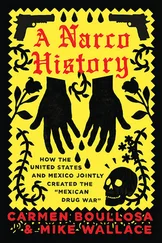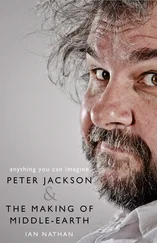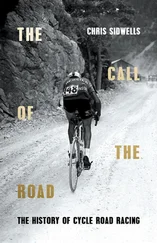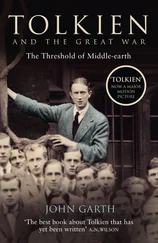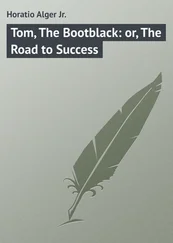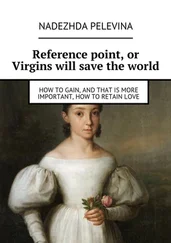If one followed this line of reasoning too far The Hobbit could appear suddenly as a roman à thèse, or even an allegory, in which Bilbo Baggins as Modern Man embarks on his Pilgrim’s Progress (or Regress) into Fantasy, only to find that at the very heart of his monsterworld there is none other than an embodiment of his own worst nature, Greed or even Capitalism itself, skulking on its gold like a fiercer Miss Havisham. The moral would be that all bourgeois must turn Burglar, or something of the sort. Of course such a reading would only be a joke. Still, if by no stretch of the imagination an allegory, The Hobbit does begin to show by its conclusion some flickers of the ‘large symbolism’ Tolkien saw in Beowulf and tried more positively to reproduce in The Lord of the Rings. In its last scene, the conversation between Gandalf, Bilbo and Balin, the wizard is allowed to make the point that metaphors can ‘after a fashion’ be true, that romance and reality are differences of presentation not of fact. The logic of what he says is that if the matter behind old songs can contain someone as prosaic as Bilbo then maybe even the prosaic events of today will sometime be the matter of old songs. There is accordingly a reality, and a continuity, in human nature, even dwarf-hobbit-human nature.
Yet the reason why this hint should not be taken further is obvious enough. Most of The Hobbit suggests strongly that Tolkien did not work from ideas, but from words, names, consistencies and contradictions in folk-tales, things as localised as the dissatisfaction with Fáfnismál which produced Smaug, the brooding over the riddle-contests of Vafðrúðnismál or The Saga of King Heidrek which led (somehow) to Gollum. The two most powerful fragments of all ancient poetry for Tolkien at this time, I cannot help thinking, were the two similar bits from Beowulf and Sir Gawain which imply there are whole worlds the narrator simply cannot get round to. The Old English poet hints at the ‘wide journeys’ which Sigemund the dragon-slayer made, ‘the wicked deeds and battles which the children of men’ (but maybe not of monsters) ‘never knew clearly’. His medieval successor says of Sir Gawain six centuries later that he would never even have reached his main adventure ‘Had he not been stalwart and staunch and steadfast in God’, so many were his clashes with worms and wolves, with wood-trolls ‘and with ogres that hounded him from the heights of the fells’. In exactly the same spirit we are told that even going home Bilbo ‘had many hardships and adventures before he got back’, since ‘The Wild was still the Wild, and there were many other things in it in those days beside goblins’. Some of them have been half-glimpsed already: eyes in the darkness, ‘old castles with an evil look’, ‘startled ears’ responding to the news of the death of Smaug. But in essence the plot of The Hobbit is a tour through darknesses, with no more connection between Gollum and the eagles and Beorn and the spiders than that of one-after-another. The true end of The Hobbit, as opposed to the last scene of chaos and tidying-up, * is the regretful farewell to the Wild just before, as archaic Took cedes to Edwardian Baggins:
They came to that high point at morning, and looking backward they saw a white sun shining over the outstretched lands. There behind lay Mirkwood, blue in the distance, and darkly green at the nearer edge even in the spring. There far away was the Lonely Mountain on the edge of eyesight. On its highest peak snow yet unmelted was gleaming pale.
‘So comes snow after fire, and even dragons have their ending!’ said Bilbo, and he turned his back on his adventure. (p. 271)
Adventure in Middle-earth embodies a modern meaning, but does not exist to propagate it. Insofar as the two worlds are related it is because the ‘inner consistency’ of Secondary Art must necessarily (in order to be consistent) be the same as that of Primary Art or truth.
* There are too many of these to fit into an argument: one might note, though, that the skill of Tolkien’s elves in archery goes back to ‘elf-shot’; that their association with the sea and their taking of Frodo is very like the passing of Arthur in (and only in) the account of Lazamon, a twelfth-century Worcestershire poet whom Tolkien regarded as the last preserver of Old English tradition; that the gifts of Galadriel correspond to stories preserved in English and Scandinavian family traditions such as that of ‘the Luck of Edenhall’ or the one recorded in Sigrid Undset’s novel Kristin Lavransdatter , part 2, ch. 6; that ‘elvishness’ is a quality recognised in men several times in The Lord of the Rings , but also ascribed to himself by the poet Geoffrey Chaucer. Tolkien makes no use, however, of the very common ‘changeling’ belief.
* ‘Orcs’ go back to the orcnéas, the ‘demon-corpses’ of the Beowulf -poet, and to another Old English word orcþyrs , ‘orc-giant’. ‘Wargs’ are a linguistic cross between Old Norse vargr and Old English wearh , two words showing a shift of meaning from ‘wolf’ to ‘human outlaw’. For the ‘ents’ see belowand note Tolkien’s own comment in Letters , p. 208, that ‘As usually with me, they grew rather out of their name, than the other way about’. The ‘woses’ are perhaps primarily an apology for Sir Gawain line 721, where wodwos is offered as a plural, though historically a singular derived from Old English wudu-wása. It would not have escaped Tolkien, though, that his office at Leeds University (like mine) stood just off ‘Woodhouse Lane’, which crosses ‘Woodhouse Moor’ and ‘Woodhouse Ridge’. These names may preserve, in mistaken modern spelling, old belief in ‘the wild men of the woods’ lurking in the hills above the Aire. See further Tolkien’s notes on ‘Orc’ and ‘Woses’ in ‘Guide’.
* I do not know the origin of the personal name ‘Bilbo’, but can record that on one occasion I found myself using Ordnance Survey map no. 161, of S. Herefordshire, to locate churches of similar date to Ancrene Wisse and preserving fragments of the early Anglo-Norse style of stonework. As I did this my eye moved west from Kilpeck to Wormbridge to Abbey Dore to a hill called ‘Great Bilbo’. The Place-Name Survey has not done Herefordshire yet, and I have no explanation for the name; maybe Tolkien had one of his own.
* The contract he finally does deliver on p. 22 is typically more practical than Bilbo at his most business-like had thought. It covers profits, delivery, travelling expenses, but also defrayal of funeral expenses, ‘by us or our represenatives, if occasion arises and the matter is not otherwise arranged for’. This means, ‘you or all of us may die, and also be eaten’.
* There is a further weak analogue in the Grimms’ tale no. 195, ‘The Grave-Mound’, and a much stronger one in C. S. Lewis’s That Hideous Strength (London: Bodley Head, 1945), end of chapter 16. There, though, the tale is given a moral significance, a little like Tolkien explaining ‘elf-time’ in Lothlórien.
* Even this, I suspect, has a philological root. In the 1928 introduction he wrote to W. E. Haigh’s Glossary of the Dialect of the Huddersfield District, mentioned above in connection with ‘Baggins’, Tolkien had said that it was important to observe ‘the changes in sense that take place when words of more “learned” origin are adopted and put to everyday use in dialect (see keȩnsil, okshȩn, inséns)’. But okshȩn in Huddersfield dialect meant not ‘auction’ but ‘mess’. ‘Shu’z nout but ȩ slut; ȩr eȩs ȩz ȩ feȩr okshȩn’, quoted Mr Haigh, or for non-natives, ‘She’s nothing but a slut; her house is a fair auction’. When he gets home Mr Baggins finds his house a ‘fair auction’ in both senses. Not only are they selling his goods, they are failing to wipe their feet on the mat! The word has become a ‘fusion-point’ of outraged respectability.
Читать дальше

